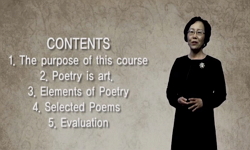이 연구에서는 ‘장희빈 죽음 서사’의 변화 과정을 분석하고, 그것이 내포하는 역사의식의 변화를 공공역사의 관점에서 고찰하였다. 희빈을 악녀로 보는 입장에서 구성된 ‘장희빈 죽음 ...
http://chineseinput.net/에서 pinyin(병음)방식으로 중국어를 변환할 수 있습니다.
변환된 중국어를 복사하여 사용하시면 됩니다.
- 中文 을 입력하시려면 zhongwen을 입력하시고 space를누르시면됩니다.
- 北京 을 입력하시려면 beijing을 입력하시고 space를 누르시면 됩니다.

‘장희빈 죽음 서사’의 현대적 변화와 공공역사 = The Changes in “Jang Hee-bin’s Death Narrative” and Public History
한글로보기부가정보
국문 초록 (Abstract)
이 연구에서는 ‘장희빈 죽음 서사’의 변화 과정을 분석하고, 그것이 내포하는 역사의식의 변화를 공공역사의 관점에서 고찰하였다. 희빈을 악녀로 보는 입장에서 구성된 ‘장희빈 죽음 서사’의 요소는 ‘죽음에 저항하며 발악’과 ‘세자에게 위해를 가함’의 두 가지로 파악된다. 역사적 사실과도 다른 이러한 요소의 정착에는 희빈 장씨를 악녀로 규정하고 정치적 갈등의 책임을 그녀에게 전가하는 크게 작용하였다.
현대에 들어와서는 영상콘텐츠를 중심으로 ‘장희빈 죽음 서사’가 점차 강화되다가 2010년대에 들어서 새로운 서사가 시도되는 양상을 보인다. 특히 2000년대 초반까지의 여러 드라마에서는 악녀로서의 ‘장희빈 죽음 서사’를 구성하는 두 요소를 모두 반영한 작품도 있었으며, 하나의 요소가 탈락되더라도 악녀의 이미지는 더욱 강화되는 모습을 보였다. 희빈 장씨의 악녀 이미지는 고착화되었고, 대중은 그러한 악녀 이미지를 적극적으로 향유하였다. 그러나 2010년대 이후의 드라마에서는 희빈 장씨의 이미지가 크게 변화하였고, 이에 따라 ‘장희빈 죽음 서사’ 또한 변화하여 악녀 서사의 두 요소를 모두 배제하고 새로운 서사를 만들어냈다.
공공역사의 측면에서 ‘장희빈 죽음 서사’의 현대화 과정을 분석하면, 먼저 역사콘텐츠이 대체서사로서의 성격이 강화된 측면을 주목할 수 있다. 새롭게 제시된 ‘장희빈 죽음 서사’는 이전까지의 악녀 서사를 따르지도 않고, 공식 기록을 따르지도 않았다. 한편, ‘장희빈 죽음 서사’의 현대적 변화 양상이 ‘책임지우기’의 역사의식을 그대로 유지하고 있는 측면은 한계로 지적할 수 있다. 역사학계의 조선 후기 정치사 연구 경향과도 배치된 이러한 역사의식은, 공공역사의 장에서 풀어나가야 할 과제를 보여준다.
다국어 초록 (Multilingual Abstract)
This study examines the changes in “Jang Hee-bin’s Death Narrative” and its implications for historical consciousness from a public history perspective. The narrative, based on the portrayal of Jang Hee-bin as a malevolent figure, is transformed...
This study examines the changes in “Jang Hee-bin’s Death Narrative” and its implications for historical consciousness from a public history perspective. The narrative, based on the portrayal of Jang Hee-bin as a malevolent figure, is transformed through two key elements: (1) her defiance against death, and (2) the alleged harm she inflicted upon her biological son, the crown prince. These elements—though historically inaccurate—derive from the perception of Jang Hee-bin as a sinister woman and the attribution of political turmoil to her actions.
In the modern era, the reinforcement of “Jang Hee-bin’s Death Narrative” is evident, particularly through visual media. However, during the 2010s, new narratives emerged. Notably, dramas up to the early 2000s depicted Jang Hee-bin as a villainess, retaining the narrative elements, and even when one element was omitted, her villainous image persisted. This portrayal became ingrained in public consciousness, eliciting active reception from the viewers. Contrarily, dramas from the 2010s onward manifest a distinct change in Jang Hee-bin’s depiction, prompting a corresponding change in the narrative. The new portrayal discards the villainess framework, introducing a fresh perspective.
From the standpoint of public history, the contemporary changes in “Jang Hee-bin’s Death Narrative” are noteworthy. First, the characteristic of the historical content as an alternative narrative has gained significance. The newly presented “Jang Hee-bin’s Death Narrative” neither follows the previous villainess narrative nor the official record. However, it has a limitation; the contemporary changes in “Jang Hee-bin’s Death Narrative” retain the historical consciousness of “taking responsibility.” This consciousness of history, which is contrary to the tendency of the political history of the late Joseon Dynasty, illustrates the challenges in the field of public history.
동일학술지(권/호) 다른 논문
-
漢代 『方言』에 수록된 北燕․朝鮮洌水지역 同訓異表記語 분석
- 동아시아고대학회
- 정재남
- 2023
- KCI등재
-
<포항 중성리 신라비>에 등장하는 喙部 소속 壹伐의 성격과 특징
- 동아시아고대학회
- 김재봉
- 2023
- KCI등재
-
조선 전기 해상정책 변화와 장영기 세력 궐기의 상관성 연구
- 동아시아고대학회
- 김대호
- 2023
- KCI등재
-
- 동아시아고대학회
- 서영교
- 2023
- KCI등재




 eArticle
eArticle


